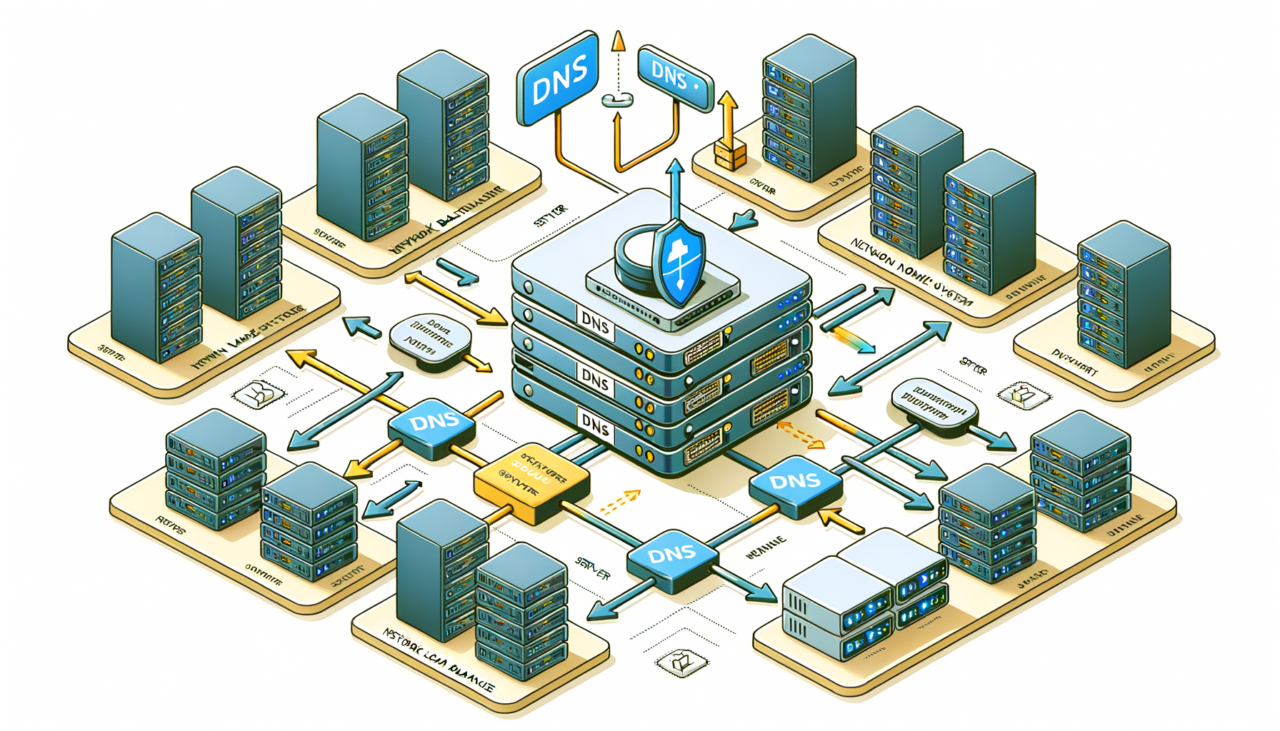In the lush gardens of my childhood home in Iran, my grandfather used to tell me that every element in nature has its role to play, each contributing to a harmonious whole. Little did I know that this wisdom would echo through my journey into the world of technology, particularly in understanding how DNS (Domain Name System) integrates with network load balancers. Much like an orchestra, where every instrument must be perfectly timed and tuned, DNS and load balancers must work in concert to ensure the smooth delivery of internet services.
Understanding the Basics
Before we dive into the integration, let’s unravel the individual threads of this digital tapestry.
Domain Name System (DNS)
DNS is akin to the address book of the internet. It translates human-friendly domain names like example.com into IP addresses that computers use to identify each other on the network. Without DNS, the internet would be a labyrinth, difficult to navigate.
Network Load Balancers
Imagine a bustling bazaar in Tehran, where the flow of people must be managed for vendors to operate efficiently. Network load balancers act like the bazaar organizers, distributing incoming traffic across multiple servers to ensure no single server is overwhelmed, thereby enhancing performance and reliability.
The Dance of Integration
The integration of DNS with network load balancers is a tale of synergy. It ensures that traffic not only finds its way to your website but also arrives at the optimal server for handling requests. Let’s explore how this integration is achieved.
DNS-Based Load Balancing
DNS load balancing is the simplest form of directing traffic. Here, DNS records are used to assign multiple IP addresses to a domain. When a user requests access to a domain, the DNS server rotates through these IPs, effectively distributing the load. This method works well for basic balancing needs but lacks the ability to make real-time decisions based on server health or load.
Global Server Load Balancing (GSLB)
GSLB takes things a step further by using DNS to direct traffic based on server health, location, or current load, ensuring users are connected to the best possible server. Imagine it as a savvy merchant who knows which stall in the bazaar has the freshest produce at any given time.
Table 1: DNS Load Balancing vs. GSLB
| Feature | DNS Load Balancing | Global Server Load Balancing (GSLB) |
|---|---|---|
| Simplicity | High | Moderate |
| Server Health Check | No | Yes |
| Geographic Routing | No | Yes |
| Load Awareness | Limited | Advanced |
Integration through Service Discovery
Service discovery protocols such as Consul and etcd can be integrated with DNS to dynamically update DNS records as server instances change. This is akin to a bazaar map that updates in real-time, guiding visitors to new stalls as they pop up.
# Example of a DNS configuration with Consul
service {
name = "web"
port = 8080
check {
id = "web-check"
name = "HTTP on port 8080"
http = "http://localhost:8080/health"
interval = "10s"
}
}
Cultural Parallel: The Art of the Persian Carpet
The precision needed in DNS and load balancer integration is reminiscent of Persian carpet weaving, where countless threads are woven together to create a masterpiece. Each thread, like a server or a domain record, must be placed with care and foresight. A single misstep can disrupt the pattern, just as a misconfigured DNS record can lead to service disruptions.
Challenges and Considerations
Like any intricate art form, integrating DNS with load balancers is not without its challenges. Monitoring and managing DNS propagation times, ensuring redundancy, and preventing DNS-based attacks are critical.
Security Considerations
Ensuring DNS security is paramount. Implementing DNSSEC (DNS Security Extensions) can help protect against attacks such as cache poisoning, much like a skilled carpet maker ensures the durability of their work against wear and tear.
Conclusion: A Harmonious Future
In the digital bazaar of today’s internet, the seamless integration of DNS with network load balancers is essential for delivering fast, reliable, and secure online experiences. As we continue to weave these technological threads together, let us remember the wisdom of harmonizing each element to create a unified whole, just as my grandfather taught me in the gardens of Iran.
By understanding and implementing these integrations, you not only enhance your network’s performance but also contribute to the grand tapestry of the internet, making it a more vibrant and accessible place for everyone.

Comments (0)
There are no comments here yet, you can be the first!